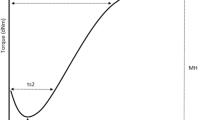Abstract
In this study, an analysis on the breaking elongation mechanism of the polyester/viscose blended open-end rotor spun yarns has been carried out. In addition, a back propagation multi layer perceptron (MLP) network and a mixture process crossed regression model with two mixture components (polyester and viscose blend ratios) and two process variables (yarn count and rotor speed) are developed to predict the breaking elongation of polyester/viscose blended open-end rotor spun yarns. Seven different blend ratios of polyester/viscose slivers are produced and these slivers are manufactured with four different rotor speed and four different yarn counts in rotor spinning machine. In conclusion, ANN and statistical model both have given satisfactory predictions; however, the predictions of ANN gave relatively more reliable results than those of statistical models. Since the prediction capacity of statistical models is also obtained as satisfactory, it can also be used for breaking elongation (%) prediction of yarns because of its simplicity and non-complex structure. In addition, it is also found in this study that yarn count, rotor speed and breaking elongation of polyester-viscose fibers and the blend ratios of these fibers in the yarn have major effects on yarn breaking elongation.
Similar content being viewed by others
References
G. F. Ya, J. S. Guo, and Y. Y. Zhou, Text. Res. J., 75(3), 274 (2005).
I. Frydrch, G. Dziworska, and M. Matusiak, Fibres Text. East. Eur., 8(2), 42 (2000).
J. Stepanovic, K. Zafirova, Z. Milutinovic, and V. Petrovic, Maced. J. Chem. Chem. Eng., 26(1), 45 (2007).
L. J. Strumillo, D. Cyniak, J. Czelkalkski, and D. Jackowski, Fibres Text. East. Eur., 15(1), 24 (2007).
D. Radjojevic, M. Stamenkovic, J. Stepanovic, and B. Antic, Fibres Text. East. Eur., 9(1), 20 (2001).
Y. Huh, Y. R. Kim, and W. Oxenham, Text. Res. J., 72(2), 156 (2002).
A. Kumar, S. M. Ishatiaque, and K. R. Salhotra, J. Text. Inst., 97(5), 385 (2006).
A. Majumdar, P. K. Majumdar, and B. Sarkar, Ind. J. Fibre Text. Res., 30(1), 19 (2005).
J. I. Mwasiagi, X. B. Huang, and X. H. Wang, Fiber. Polym., 9(1), 80 (2008).
P. K. Majumdar and A. Majumdar, Text. Res. J., 74(7), 652 (2004).
K. P. S. Cheng and H. L. I. Lam, Text. Res. J., 73(2), 161 (2003).
M. Topalbekiroğlu, E. Hosrafoğlu Çoruh, M. E. İnce and H. K. Kaynak, Tekstil ve Konfeksiyon, 17(2), 104 (2007), (in Turkish).
M. E. Üreyen and P. Gürkan, Fiber. Polym., 9(1), 87 (2008).
M. E. Üreyen and P. Gürkan, Fiber. Polym., 9(1), 92 (2008).
A. A. Gharehaghaji, M. Shanbeh, and M. Palhang, Text. Res. J., 77(8), 565 (2007).
L. Cheng and D. L. Adams, Text. Res. J., 65(9), 495 (1995).
M. C. Ramesh, R. Rajamanickam, and S. Jayaraman, J. Text. Inst., 86(3), 459 (1995).
N. Shanmugam, S. K. Chattopahyay, M. V. Vivekanandan, and H. V. Sreenivasamurthy, Ind. J. Fibre Text. Res., 26(4), 372 (2001).
O. Demiryürek and E. Koç Fiber. Polym., 10(2), 237 (2009).
B. J. Collier and P. G. Tortora, “Understanding Textiles”, Prentice Hall, pp.267–268, NJ, USA, Sixth Edition, 2001.
O. Demiryürek, Extruders Used in Synthetic Fibre Production and Design Basis of Extruder-Pump System, MSc Thesis, University of Çukurova, 2004 (in Turkish).
A. K. Soe, M. K. Takahashi, M. Nakajima, T. Matsuo, and T. Matsumoto, Text. Res. J., 74(9), 819 (2004).
C. A. Lawrence, “Fundamentals of Spun Yarn Technology”, CRC Press, pp.373–374, USA, 2003.
K. Shihab, J. Comp. Sci., 2(9), 710 (2006).
C. F. J. Kuo, K. I. Hsiao, and Y. S. Wu, Text. Res. J., 74(9), 840 (2004).
D. C. Montgomery, “Design and Analysis of Experiments”, John Wiley & Sons, Inc., pp.472–484, USA, 2001.
Author information
Authors and Affiliations
Corresponding author
Rights and permissions
About this article
Cite this article
Demiryürek, O., Koç, E. The mechanism and/or prediction of the breaking elongation of polyester/viscose blended open-end rotor spun yarns. Fibers Polym 10, 694–702 (2009). https://doi.org/10.1007/s12221-010-0694-4
Received:
Revised:
Accepted:
Published:
Issue Date:
DOI: https://doi.org/10.1007/s12221-010-0694-4




